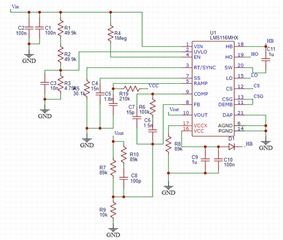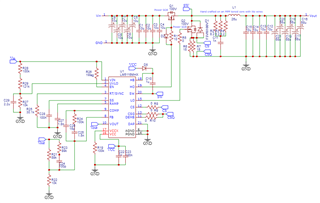Hello, the full description of my problem is attached in a pdf file. also attached is the schematic of my LM5116 peripherals.
In summary: When stuck in hard short, sometimes while retrying into hiccup mode - the controller will lose current sense and the inductor current will be unlimited.
Please read the pdf for a full description.
Thanks!



